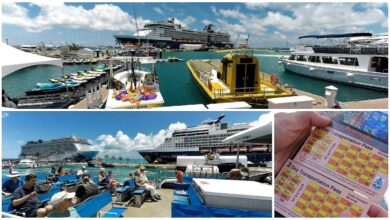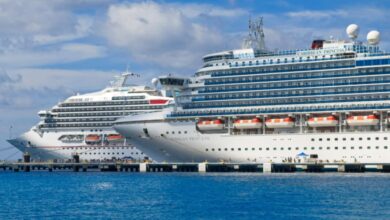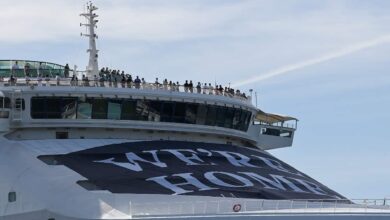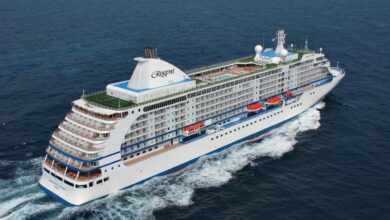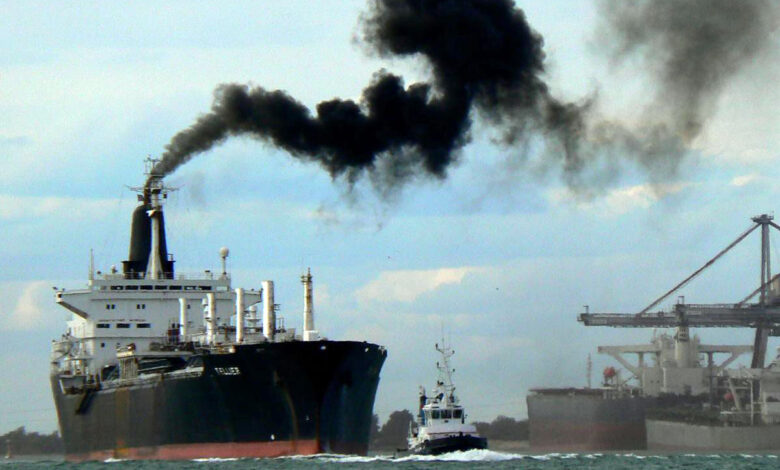
Australia and Europe Tackle Cruise Ship Sulfur Emissions
Australia and Europe tackle cruise ship sulfur emissions, highlighting a global effort to combat pollution from these vessels. This collaborative approach addresses the significant environmental impact of cruise ship emissions, particularly on marine ecosystems and the atmosphere. The discussion explores potential strategies, technological solutions, economic implications, and the necessary policy frameworks to achieve sustainable cruise travel.
The escalating concern over sulfur emissions from cruise ships has prompted international regulations. Australia and Europe, recognizing their shared responsibility for protecting marine environments and air quality, are taking proactive steps to mitigate the impact of these emissions on their respective coastal regions and beyond. This initiative reflects a growing global awareness of the environmental consequences of shipping activities.
Introduction to the Issue
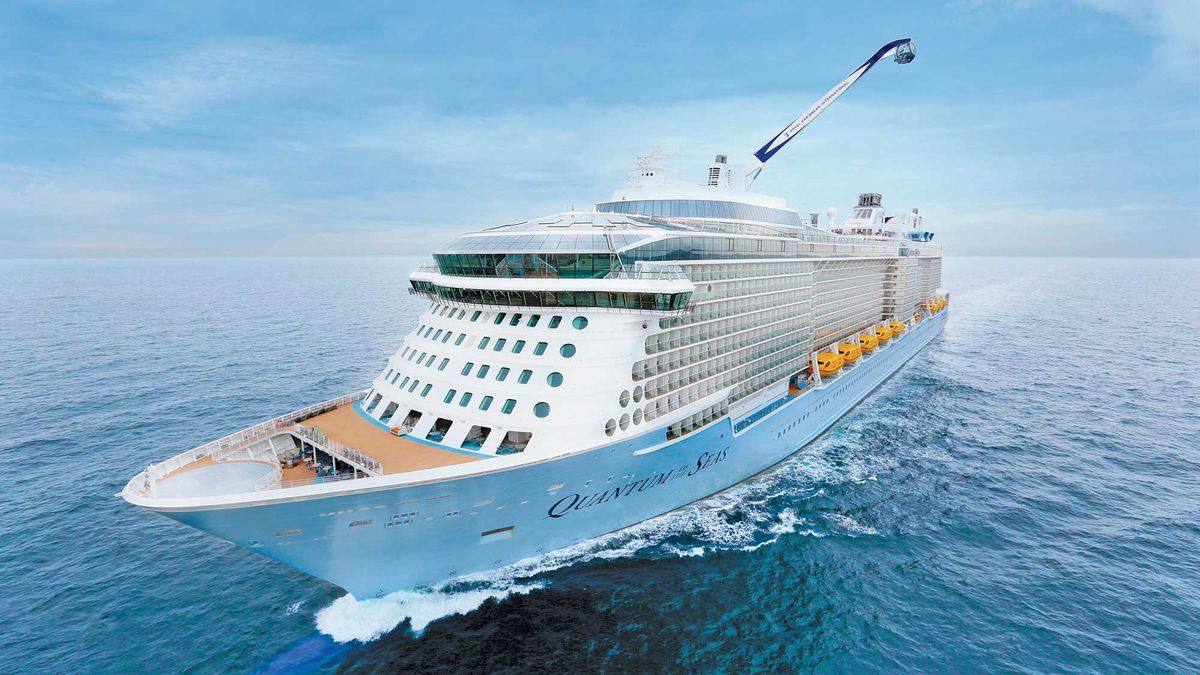
Cruise ships, while offering luxurious travel experiences, contribute significantly to air and water pollution, particularly concerning sulfur emissions. These emissions, once prevalent, are now increasingly regulated, but the environmental impact remains a crucial concern. Understanding the historical context, international agreements, and geographical implications of these regulations is essential for assessing the current situation and future trends.Sulfur oxides, a byproduct of burning fossil fuels, are released into the atmosphere during the operation of cruise ships.
These emissions have detrimental effects on both the atmosphere and marine ecosystems. The impact on air quality includes acid rain formation and respiratory issues in coastal communities. Furthermore, the release of sulfur oxides into the ocean can lead to the formation of acidified waters, harming marine life, disrupting marine ecosystems, and affecting food chains.
International Regulations and Agreements
International Maritime Organization (IMO) regulations are the primary framework governing sulfur emissions from shipping. The IMO has established progressively stricter limits on sulfur oxide emissions, reflecting growing awareness of the environmental impact. These regulations are designed to mitigate the environmental harm caused by sulfur oxides from ships’ exhaust. The IMO’s 2020 sulfur cap is a landmark example, mandating a maximum sulfur content in marine fuels.
This significant shift reflects a global commitment to cleaner shipping practices.
Geographical Context of Australia and Europe, Australia and europe tackle cruise ship sulfur emissions
Australia and Europe, due to their significant reliance on maritime trade and tourism, are particularly impacted by shipping regulations. Australia, with its vast coastline and extensive shipping routes, faces the challenges of managing pollution from cruise ships and other vessels. Europe, with its dense network of ports and waterways, also needs effective strategies to address the environmental concerns associated with maritime traffic.
The geographical location of both regions, in proximity to major shipping lanes, makes them highly vulnerable to the consequences of sulfur emissions. For example, the Mediterranean Sea, frequented by numerous cruise ships, is a critical area requiring stringent emission control measures.
Historical Context of Sulfur Emission Regulations
The evolution of sulfur emission regulations for shipping reflects the growing understanding of environmental impacts. Initially, there were minimal regulations, leading to widespread sulfur oxide emissions. However, public awareness and scientific research highlighted the detrimental consequences of these emissions, prompting international cooperation and the development of stricter regulations. The historical progression of regulations demonstrates a gradual but persistent commitment to cleaner maritime practices.
Australia and Europe are taking strong steps to curb sulfur emissions from cruise ships, a move that’s crucial for cleaner air. While these efforts focus on reducing pollution, it’s interesting to consider how these environmental concerns might indirectly impact something like American’s pay cut in the travel industry. Perhaps reduced cruise ship emissions will create new economic opportunities elsewhere, like a need for specialized equipment or sustainable tourism ventures.
Ultimately, the international effort to reduce cruise ship sulfur emissions is a positive step forward for the environment, and could have surprising knock-on effects in unexpected areas, like american s pay cut , but overall still contributes to a healthier planet.
The transition from minimal regulations to stringent emission controls showcases a global movement towards environmental sustainability.
Collaborative Efforts and Agreements
Tackling the sulfur emissions from cruise ships requires a global effort, particularly strong collaboration between regions like Australia and Europe. Shared environmental concerns and the potential for reciprocal benefits make such partnerships crucial. Effective strategies will need to consider existing regulations, international agreements, and the involvement of various stakeholders.The success of reducing sulfur emissions hinges on shared understanding and coordinated action.
Australia and Europe are making strides in tackling cruise ship sulfur emissions, which is great news for the environment. But, managing those costs can be tricky, especially when you’re trying to stay on top of your office packaging shipping supplies costs. Finding the right balance between eco-friendly practices and budget-conscious shipping solutions is key, and thankfully, resources like staying on top of your office packaging shipping supplies costs can help you do just that.
This initiative shows a proactive approach to reducing pollution from cruise ships, demonstrating a global commitment to cleaner oceans.
This includes the implementation of regional strategies for international agreements, as well as a careful comparison of existing policies to identify common ground and areas for improvement. Furthermore, recognizing the roles of different stakeholders—governments, shipping companies, environmental groups, and academic institutions—is vital for achieving the desired outcomes.
Potential Collaborative Strategies
Australia and Europe share a strong commitment to environmental protection, and this can be a cornerstone for collaborative strategies. Joint research projects, knowledge sharing, and the development of standardized emission reduction technologies are some of the possible avenues. Moreover, joint initiatives to monitor and enforce regulations on cruise ships operating in shared waters will strengthen the effectiveness of these agreements.
This could include joint inspections and information-sharing mechanisms.
Mechanisms for Implementing International Agreements
Implementing international agreements on a regional level requires clear mechanisms for enforcement and monitoring. These mechanisms should include provisions for sanctions against non-compliant vessels, along with robust data collection and analysis procedures. Regional task forces or working groups comprised of representatives from both countries can effectively facilitate the implementation of these agreements. They can also facilitate the sharing of best practices in monitoring and enforcement.
Comparison of Environmental Policies and Regulations
Australia and Europe have established environmental policies and regulations for marine pollution. While both prioritize environmental protection, specific regulations and their implementation may differ. A comparative analysis of these regulations is essential to identify areas of alignment and potential conflicts. By understanding the nuances of each other’s policies, the two regions can establish a framework that effectively addresses the issue.
Role of International Organizations
International organizations like the International Maritime Organization (IMO) play a vital role in fostering collaboration. The IMO sets international standards for ship emissions, and facilitating dialogue and cooperation between Australia and Europe is a key function. Their expertise and global reach can help coordinate efforts and ensure compliance with international standards. Australia and Europe can leverage the IMO’s platform for exchanging best practices and fostering a shared understanding of the issue.
Stakeholder Involvement
Effective implementation requires a multifaceted approach involving all stakeholders. This includes governments, who establish and enforce regulations; shipping companies, who need to adapt to the new standards; environmental groups, who advocate for stricter measures; and academic institutions, who can contribute to research and development. These stakeholders have critical roles in the process, and their collaboration is essential for success.
A collaborative approach, involving all stakeholders, will be necessary to ensure a comprehensive and sustainable solution.
Technological Solutions and Innovations: Australia And Europe Tackle Cruise Ship Sulfur Emissions
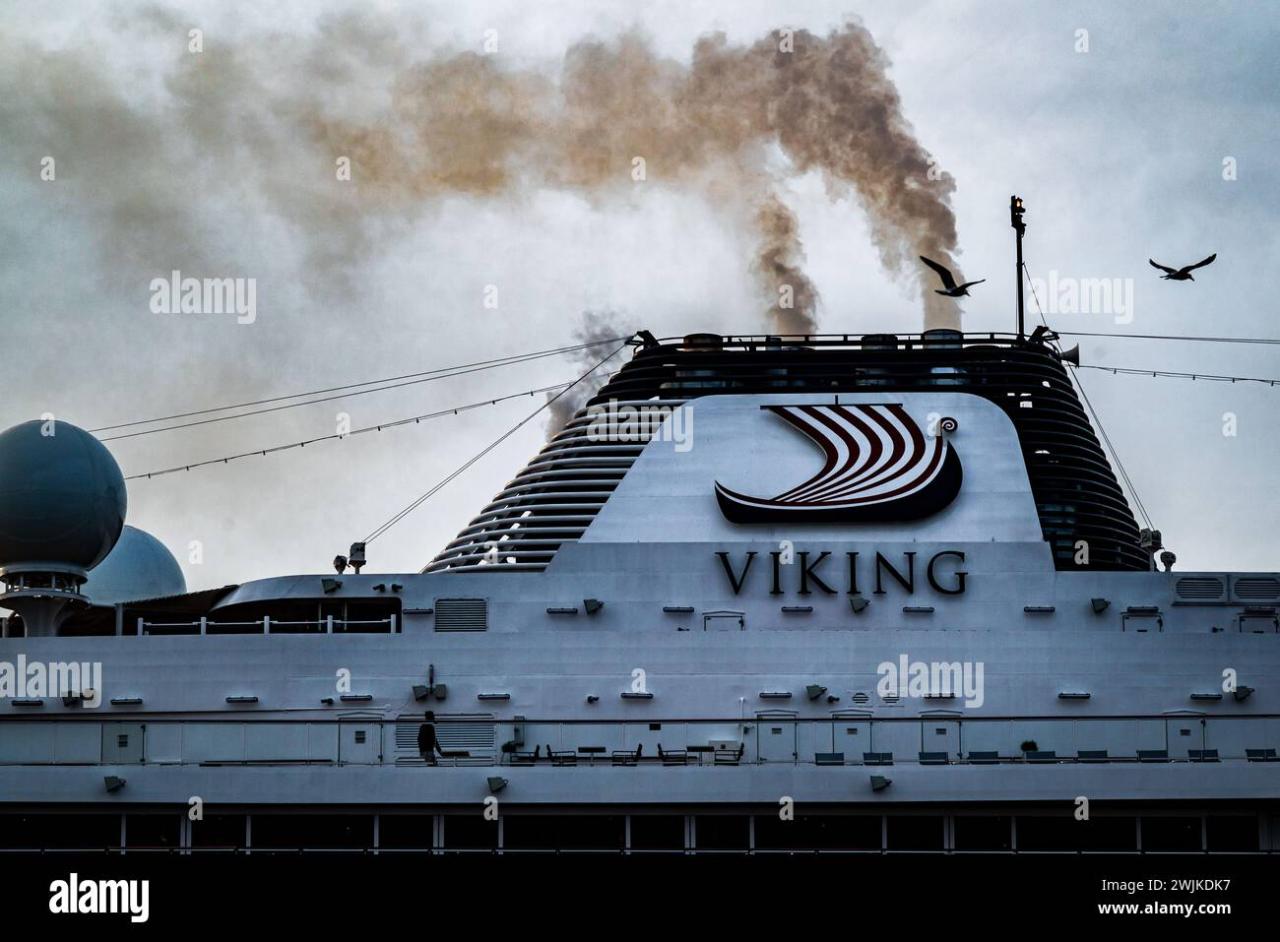
Cruise ships, iconic symbols of global travel, are facing increasing pressure to reduce their environmental footprint. The need for innovative technological solutions to mitigate sulfur emissions, a significant contributor to air pollution, is paramount. This section explores various alternative fuel technologies, emission control systems, and the infrastructure required to facilitate their adoption in Australian and European ports. Understanding the costs and benefits of these technologies is crucial for a smooth transition to cleaner shipping.The transition to cleaner energy sources for cruise ships is a complex process demanding a multifaceted approach.
Australia and Europe are taking strong steps to reduce sulfur emissions from cruise ships, a great move for cleaner waters. Thinking about your own travel plans, though, remember to check out 6 key planning tips for travel to Saudi Arabia if you’re considering a trip there. These emission reductions are crucial for protecting marine ecosystems, and hopefully, similar initiatives will spread across the globe to further improve the health of our oceans.
Different technologies have varying degrees of feasibility, cost-effectiveness, and environmental impact. This analysis will examine the viability of alternative fuels and emission control technologies to assess their suitability for the maritime industry. Furthermore, it will consider the crucial infrastructure adjustments needed for seamless implementation in both Australia and Europe.
Alternative Fuel Technologies
Various alternative fuels are being investigated for cruise ships. Liquefied natural gas (LNG) is a promising option, with a significantly lower sulfur oxide emission profile than traditional marine fuels. Examples include the LNG-powered cruise ships currently in operation, demonstrating the potential for widespread adoption. Biofuels derived from sustainable sources also hold promise, although the availability and cost of these fuels remain significant challenges.
Hydrogen fuel cells are a long-term prospect, but early-stage development efforts suggest a potentially cleaner alternative in the future. Electric propulsion systems, though still in their nascent stage for large vessels, are also being researched, and offer an entirely emission-free option.
Emission Control Technologies
Scrubber systems are a proven method for reducing sulfur oxide emissions. These systems utilize alkaline solutions to neutralize sulfur oxides in exhaust gases, significantly improving air quality. The installation and operation of scrubbers are already a reality for many ships. Other emission control technologies, such as advanced exhaust gas cleaning systems and selective catalytic reduction (SCR) catalysts, are also under development and deployment.
The efficacy and cost-effectiveness of these technologies are being continually assessed and refined.
Cost-Effectiveness Comparison
The cost-effectiveness of different emission reduction technologies varies significantly. Factors like the size of the vessel, the specific technology employed, and the fuel costs play a crucial role. For example, the upfront capital cost of installing scrubbers is relatively lower than that of switching to LNG propulsion, but the ongoing operational costs of LNG are typically lower than those of using scrubbers.
Australia and Europe are leading the charge in reducing sulfur emissions from cruise ships, a crucial step in environmental protection. Interestingly, this coincides with a significant shift in the maritime industry, as Aker Yards, a major shipbuilder, is reportedly changing its name. This renaming, detailed in aker yards name goes away , might signal a new era of innovation and sustainability in the industry.
The global effort to tackle cruise ship emissions continues, highlighting the need for both environmental responsibility and industry adaptation.
Biofuel adoption faces challenges in terms of production costs and scalability, impacting cost-effectiveness. A comprehensive analysis considering the long-term operational and environmental costs is necessary to identify the most sustainable solutions.
Infrastructure Needs
The implementation of these technologies requires significant infrastructure development in ports. This includes the establishment of LNG bunkering facilities, biofuel storage and distribution networks, and electric charging stations. The specific infrastructure requirements will vary depending on the chosen technology. Australia and Europe will need to invest in new facilities and infrastructure to support the implementation of these new technologies.
The development of these infrastructure components will be critical to the successful deployment of alternative fuels and emission control systems.
Australia and Europe are taking significant steps to reduce sulfur emissions from cruise ships, a crucial environmental initiative. This effort reflects a broader global push for cleaner travel. Interestingly, the strategies employed in advertising and the pioneer online travel agencies ( advertising and the pioneer otas ) have some parallels to these environmental regulations. Ultimately, both aim to shape consumer behavior, whether it’s reducing pollution or encouraging specific travel choices.
This global collaboration is vital for a sustainable future for the travel industry.
Pros and Cons of Different Technological Solutions
| Technology | Pros | Cons |
|---|---|---|
| LNG Fuel | Lower sulfur oxide emissions, reduced particulate matter | Infrastructure development required (LNG bunkering facilities), potential noise and vibration issues |
| Scrubbers | Relatively lower upfront costs, readily available technology | Potential impact on ship design, operational costs, and potential for corrosion |
| Biofuels | Potential for carbon neutrality, reduces dependence on fossil fuels | Variability in sustainability, cost, and supply chain issues |
| Electric Propulsion | Zero emissions, potentially reduced noise | Limited range and charging infrastructure, battery life, high initial cost |
Economic and Social Impacts
Tackling sulfur emissions from cruise ships isn’t just about environmental protection; it has profound economic and social consequences for both cruise operators and the communities they visit. The shift towards cleaner fuels and technologies necessitates significant investment, potentially impacting profitability. However, the long-term benefits, including improved public health and enhanced tourism experiences, can outweigh these initial costs.The economic and social impacts of sulfur emission reduction measures are multifaceted and interconnected.
Implementing stricter regulations will influence the profitability of cruise lines, impacting job opportunities within the industry. Furthermore, the transition to cleaner fuels and technologies will create new job opportunities in related sectors, such as renewable energy and sustainable tourism. Coastal communities and local businesses reliant on cruise tourism will also feel the ripple effects of these changes.
Economic Implications for Cruise Ship Operators
The transition to low-sulfur fuels or alternative propulsion systems will involve substantial upfront capital expenditure for cruise ship operators. Replacing existing engines, purchasing new vessels, or adopting alternative technologies will be costly. This cost will be passed on to consumers in the form of higher ticket prices or reduced onboard amenities, impacting the overall profitability of the cruise line.
Reduced fuel efficiency in some cases can also affect profit margins. Some companies might choose to reduce their fleet size or focus on less regulated routes to mitigate the economic impact. However, long-term efficiency gains and potentially reduced operational costs, as well as increased demand for eco-friendly travel, can offset some of these initial costs.
Economic Benefits for Tourism and Related Industries
Reduced air pollution from cruise ships will lead to improved air quality in coastal areas. This, in turn, can attract more tourists, benefiting hotels, restaurants, and other tourism-related businesses. Clean air and water will enhance the overall tourism experience, leading to increased spending and potentially higher occupancy rates. For example, in areas with sensitive ecosystems, cleaner emissions could attract eco-conscious travelers.
This influx of visitors can translate into job creation within the tourism sector, particularly in hospitality, retail, and transportation. The shift towards eco-tourism could further stimulate economic activity by supporting local businesses that cater to this market segment.
Impact on Job Creation or Loss
The transition to cleaner technologies will create new job opportunities in the renewable energy sector, sustainable tourism, and specialized engineering fields. However, some jobs in the traditional cruise ship industry, such as those related to the operation of high-sulfur fuel-powered vessels, could be lost. The extent of job creation and displacement will depend on the speed and scale of the transition, as well as the availability of retraining and upskilling programs for affected workers.
Strategic investments in retraining programs and initiatives to promote new green technologies can mitigate potential job losses.
Comparison of Economic Costs and Benefits of Different Solutions
| Solution | Economic Costs | Economic Benefits |
|---|---|---|
| Low-sulfur fuels | Higher fuel costs, potential engine modifications | Reduced air pollution, potential for enhanced tourism |
| Alternative propulsion systems (e.g., electric, hybrid) | High initial investment in new technologies, infrastructure changes | Zero emissions, reduced operational costs in the long term, enhanced brand image |
| Port-based emission controls | Infrastructure investment for cleaner fuel distribution, operational changes | Reduced air pollution, improved port image, enhanced tourism |
Social Implications
The shift towards cleaner cruise ship emissions will affect coastal communities in various ways. Reduced air pollution will improve public health, leading to fewer respiratory illnesses and other health issues. Enhanced tourism due to cleaner air and water will boost local economies and create jobs. However, potential job losses in the traditional cruise ship industry will require proactive measures to support workers in finding new employment opportunities.
The social implications also extend to the cruise experience itself, with potential changes in the types of activities and destinations available, catering to a growing eco-conscious market. Coastal communities might need to adapt to changing tourism patterns and potentially find new ways to attract and engage eco-conscious tourists.
Policy and Regulatory Frameworks
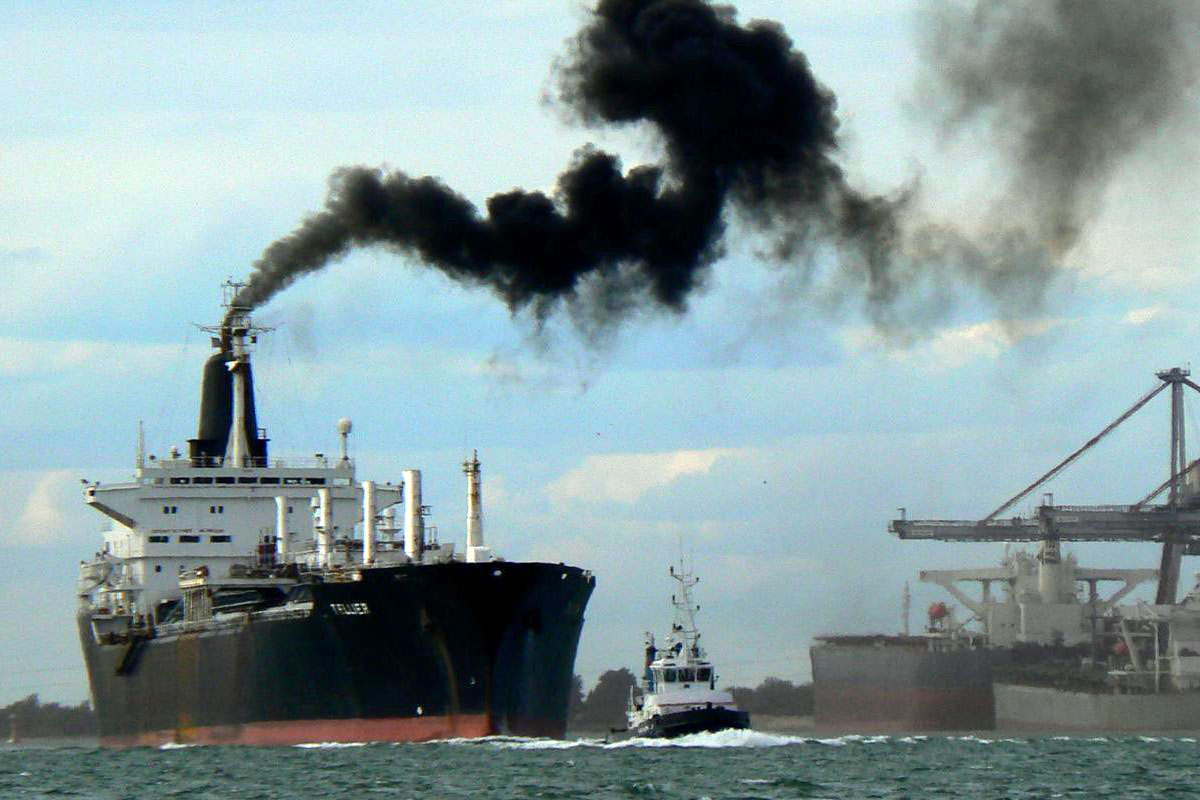
Crafting effective sulfur emission regulations for cruise ships requires a multi-faceted approach that goes beyond individual nation-state policies. A regional collaboration is crucial to establish consistent standards and ensure their uniform enforcement across different ports. This collaborative effort is vital to address the transboundary nature of the problem, where cruise ships traverse multiple jurisdictions. Furthermore, a comprehensive framework must address the enforcement mechanisms to ensure compliance and deter non-compliance.A robust policy framework needs to consider the various stakeholders involved, from ship owners and operators to port authorities and environmental agencies.
It must also acknowledge the economic and social impacts of these regulations on the cruise industry and the communities that rely on it. This holistic approach is essential to balance environmental protection with economic viability and social equity.
Potential Regional Collaboration Framework
A regional framework for sulfur emission standards should establish a common set of emission limits for cruise ships operating in the region. This unified standard will ensure consistency and avoid loopholes that could undermine the effectiveness of the regulations. The framework should also include provisions for periodic reviews and adjustments of the standards based on evolving scientific knowledge and technological advancements.
Specific mechanisms should be developed to encourage the adoption of cleaner technologies and fuel alternatives.
Enforcement Mechanisms
Implementing the new regulations necessitates robust enforcement mechanisms. These mechanisms should include provisions for inspections of cruise ships in ports, monitoring of emissions during voyages, and penalties for violations. The penalties should be substantial enough to act as a deterrent and reflect the environmental harm caused by non-compliance. Clear procedures for appeals and dispute resolution should also be established.
Role of Port States
Port states play a critical role in enforcing regulations regarding sulfur emissions from cruise ships. Their responsibility includes inspecting ships upon arrival, verifying compliance with the emission standards, and taking appropriate action against non-compliant vessels. Effective enforcement requires close collaboration between port authorities and environmental agencies. This collaboration will ensure a standardized approach to inspections and penalties.
Crucially, port states should have the authority to deny entry to vessels that fail to meet the required emission standards.
Existing and Proposed Regulations (Australia & Europe)
| Country | Existing Regulations | Proposed Regulations/Future Plans |
|---|---|---|
| Australia | Australia has regulations addressing sulfur emissions from ships, though the specifics regarding cruise ships may vary. These regulations likely align with international standards. | Australia might adopt stricter standards aligned with the latest international recommendations, potentially reflecting a shift towards even lower sulfur limits for cruise ships. |
| Europe | The EU has implemented stringent regulations regarding sulfur emissions from ships, encompassing various vessel types, including cruise ships. These regulations are likely part of a wider maritime policy aiming to reduce emissions from the shipping sector. | Europe is expected to maintain its strong stance on emission reduction, likely incorporating further enhancements and stricter deadlines for the implementation of these regulations. |
Comparison of Effectiveness and Potential Improvements
The effectiveness of existing policies varies across regions, influenced by the stringency of the regulations, the level of enforcement, and the availability of compliance measures. For instance, regions with robust inspection procedures and substantial penalties tend to have higher compliance rates. Potential improvements in the existing policies include increased harmonization of regulations across jurisdictions to minimize loopholes and improve the consistency of enforcement.
Greater transparency and public participation in the regulatory process could also enhance public trust and acceptance. Furthermore, promoting technological innovation through incentives and support programs could encourage the adoption of cleaner technologies.
Monitoring and Evaluation
Crucially, effective monitoring and evaluation are essential to gauge the success of sulfur emission reduction strategies for cruise ships. A robust framework allows for continuous assessment of the impact of implemented solutions, enabling adjustments and improvements over time. This proactive approach ensures that efforts remain aligned with targets and yield the desired environmental benefits.
Monitoring Sulfur Emissions
Measuring sulfur emissions from cruise ships requires sophisticated technology and standardized protocols. Advanced onboard monitoring systems equipped with Continuous Emission Monitoring Systems (CEMS) are vital. These systems collect real-time data on sulfur oxide (SOx) emissions, allowing for immediate identification of deviations and potential issues. Furthermore, regular port-based inspections using portable CEMS or dedicated emission testing equipment are necessary for comprehensive assessments.
Data analysis should encompass historical emission trends to establish baselines and track progress against reduction targets.
Data Collection and Analysis Procedures
Establishing a structured data collection and analysis procedure is paramount. This involves meticulously recording data from CEMS, port inspections, and other relevant sources. Data should be meticulously stored in a secure database accessible to authorized personnel. The collected data will then undergo rigorous analysis using statistical methods to identify trends, patterns, and correlations. Crucially, data analysis should incorporate various factors that influence emissions, such as ship type, engine load, and operational conditions, to ensure accurate interpretation of results.
Examples of Monitoring and Reporting Systems
Several organizations and regulatory bodies have implemented successful monitoring and reporting systems for similar contexts. The International Maritime Organization (IMO) has established guidelines for monitoring ship emissions, which serve as a valuable reference point. Furthermore, national and regional environmental agencies have developed their own monitoring and reporting frameworks tailored to specific regions. These systems often include standardized reporting templates, clear data formats, and established communication channels for stakeholders.
Key Performance Indicators (KPIs) for Tracking Progress
Monitoring the effectiveness of sulfur emission reduction strategies necessitates clear KPIs. A well-defined framework is necessary for evaluating progress.
| KPI | Description | Measurement Method | Target |
|---|---|---|---|
| Average SOx Emission Rate (per ship) | The average amount of sulfur oxides emitted per ship during a defined period. | Data from CEMS and port inspections | X% reduction from baseline |
| Compliance Rate | Percentage of cruise ships meeting emission standards. | Verification of compliance records from port inspections | 95% compliance |
| Number of Incidents | Frequency of exceeding emission limits or reporting violations. | Analysis of monitoring data | < 5 incidents per month |
| Operational Efficiency | The impact of implemented solutions on the operational efficiency of cruise ships. | Comparison of fuel consumption and operational costs with baseline data | Maintain or improve operational efficiency. |
Case Studies and Best Practices
Tackling sulfur emissions from cruise ships requires a multifaceted approach, drawing inspiration from successful strategies implemented elsewhere. Learning from past experiences and adapting proven techniques is crucial for effective mitigation. This section examines case studies from various regions, highlighting successful collaborations and the practical application of environmental regulations.
Successful Strategies in Other Regions
Various regions have successfully addressed similar environmental challenges related to emissions. These cases often involve a combination of regulatory frameworks, technological advancements, and stakeholder collaborations. Examining these strategies provides valuable insights for developing effective solutions to the cruise ship sulfur emission problem.
Examples of Successful Collaborations
Effective collaborations between governments, industry, and environmental organizations are key to successful emission reduction programs. A successful strategy requires a unified front and a shared understanding of the challenges and goals. Strong partnerships facilitate the implementation of innovative technologies and the enforcement of regulations. For example, the successful implementation of emissions trading schemes often relies on cooperation between different nations to establish common standards.
Case Studies Summary
| Region/Country | Challenge Addressed | Key Strategies | Outcomes |
|---|---|---|---|
| California, USA | Vehicle emissions | Implementation of stringent emission standards, investment in alternative fuels, and incentives for cleaner vehicles. | Significant reduction in vehicle emissions and improved air quality, leading to public health benefits. |
| European Union | Industrial emissions | Establishment of emission trading schemes, investment in cleaner technologies, and stricter regulations on industrial pollution. | Reduction in industrial emissions across the region, resulting in improved air quality and environmental protection. |
| China | Air pollution from coal-fired power plants | Shifting to cleaner energy sources, upgrading power plants with pollution control equipment, and promoting stricter regulations. | Significant improvement in air quality in major cities, demonstrating the effectiveness of a coordinated national effort. |
Specific Actions and Outcomes
The specific actions taken in these case studies varied but often involved a combination of legislative measures, technological advancements, and public awareness campaigns. For instance, California’s stringent emission standards for vehicles motivated the development of more efficient engines and alternative fuel technologies. These actions, combined with public awareness campaigns, resulted in significant reductions in vehicle emissions and demonstrable improvements in air quality.
Likewise, the EU’s emissions trading schemes incentivized industries to reduce emissions, leading to a marked decrease in pollutants released into the atmosphere.
Outcome Summary
In conclusion, the collaborative effort between Australia and Europe to tackle cruise ship sulfur emissions showcases a crucial step towards a more sustainable future for maritime travel. By combining robust policy frameworks with innovative technological solutions, these regions aim to balance economic benefits with environmental responsibility. The success of this initiative will be measured not only by the reduction in sulfur emissions but also by the establishment of effective monitoring and evaluation frameworks to ensure long-term environmental protection.
FAQ Resource
What are the primary sources of sulfur emissions from cruise ships?
Sulfur emissions primarily stem from the burning of fossil fuels, such as heavy fuel oil, in the ships’ engines. Various onboard processes also contribute.
What are the key economic considerations for cruise ship operators when adopting emission reduction technologies?
Implementing new emission reduction technologies, such as scrubbers, can incur significant upfront costs for cruise lines. However, there are potential long-term savings related to reduced compliance penalties and improved operational efficiency.
What are the potential impacts of these regulations on tourism in affected regions?
While regulations may impact cruise ship operations, the long-term benefits for the environment and the associated economic benefits of preserving coastal ecosystems could outweigh any short-term challenges for tourism. This depends on the design and implementation of the regulations.
What role do international organizations play in facilitating this collaboration?
International bodies like the International Maritime Organization (IMO) play a crucial role in establishing global standards and frameworks for emission reductions. They facilitate cooperation and technical assistance to support the implementation of these regulations.

